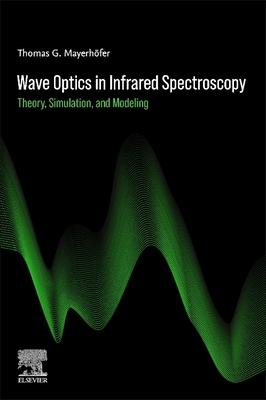Wave Optics in Infrared Spectroscopy starts where conventional books about infrared spectroscopy end. Whereas the latter are based on the Bouguer-Beer-Lambert law, the cornerstones of this book are wave optics and dispersion theory. This gap between both levels of theory is bridged to allow a seamless transition from one to the other. Based on these foundations, the reader is able to choose which level of theory is adequate for the particular problem at hand. Advanced topics like 2D correlation analysis, chemometrics and strong coupling are introduced and viewed from a wave optics perspective. Spectral mixing rules are also considered to better understand spectra of heterogeneous samples. Finally, optical anisotropy is examined to allow a better understanding of spectral features due to orientation and orientational averaging. This discussion is based on a 4 x 4 matrix formalism, which is used not only to simulate and analyze complex materials, but also to understand vibrational circular dichroism from a (semi-) classical point of view. Wave Optics in Infrared Spectroscopy is written as a tool to reunite the fragmented field of infrared spectroscopy. It will appeal to chemists, physicists, and chemical/optical engineers.

Wave Optics in Infrared Spectroscopy: Theory, Simulation, and Modeling
Wave Optics in Infrared Spectroscopy starts where conventional books about infrared spectroscopy end. Whereas the latter are based on the Bouguer-Beer-Lambert law, the cornerstones of this book are wave optics and dispersion theory. This gap between both levels of theory is bridged to allow a seamless transition from one to the other. Based on these foundations, the reader is able to choose which level of theory is adequate for the particular problem at hand. Advanced topics like 2D correlation analysis, chemometrics and strong coupling are introduced and viewed from a wave optics perspective. Spectral mixing rules are also considered to better understand spectra of heterogeneous samples. Finally, optical anisotropy is examined to allow a better understanding of spectral features due to orientation and orientational averaging. This discussion is based on a 4 x 4 matrix formalism, which is used not only to simulate and analyze complex materials, but also to understand vibrational circular dichroism from a (semi-) classical point of view. Wave Optics in Infrared Spectroscopy is written as a tool to reunite the fragmented field of infrared spectroscopy. It will appeal to chemists, physicists, and chemical/optical engineers.